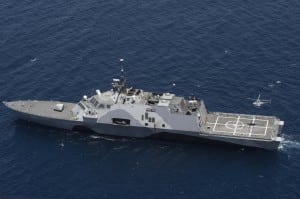
The House Armed Services subcommittee on seapower’s mark of the FY ’19 defense authorization bill authorizes three Littoral Combat Ships (LCSs) and would push the Navy to procure the technical data rights to acquired frigate-class ships.The subcommittee mark is recommending the full committee authorize three LCSs for FY ’19, while the Navy only requested one in the FY ’19 budget request.The Navy’s requirement from the last force structure assessment is for 52 small surface combatants (SSCs) and the service previously…

 By
By 











